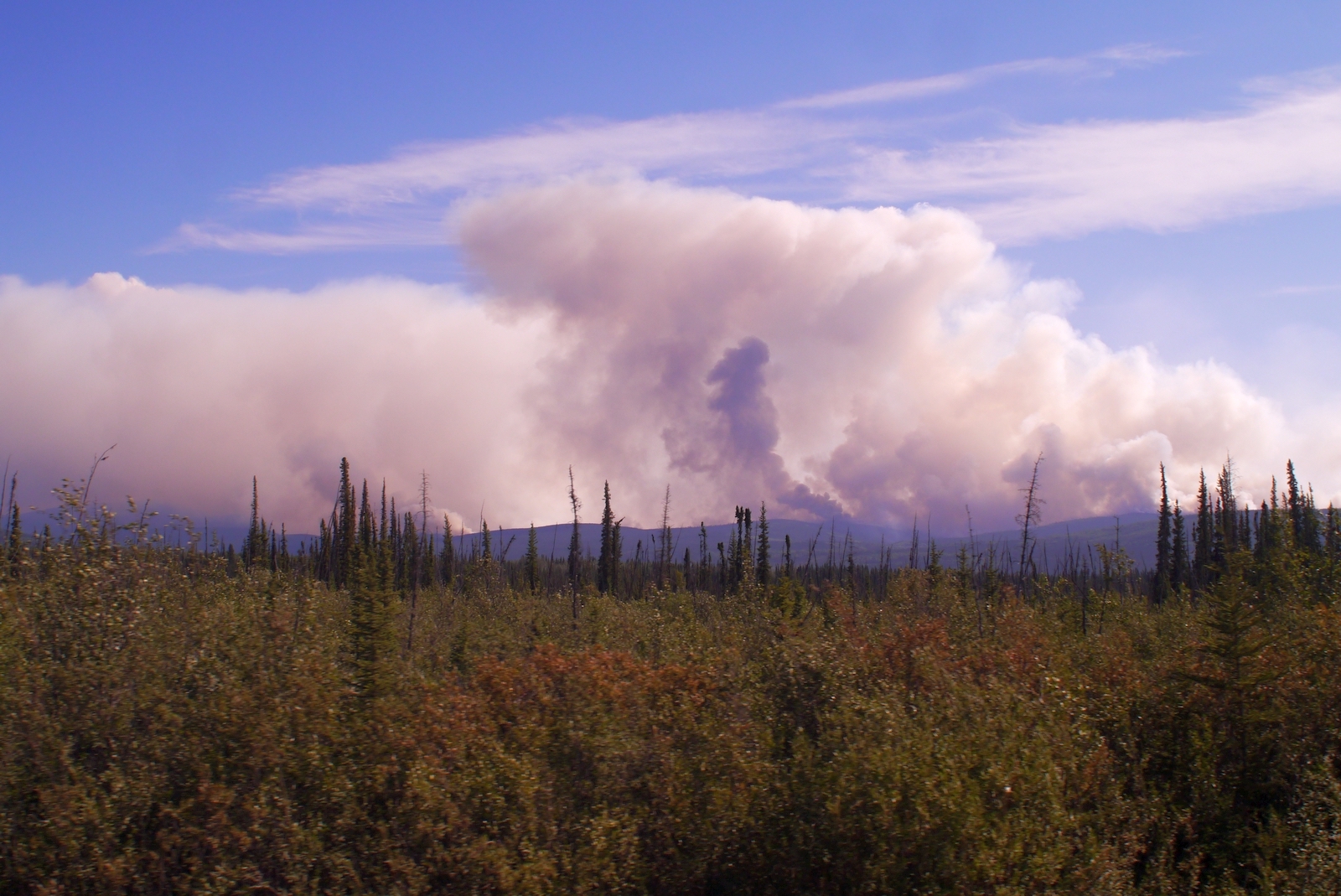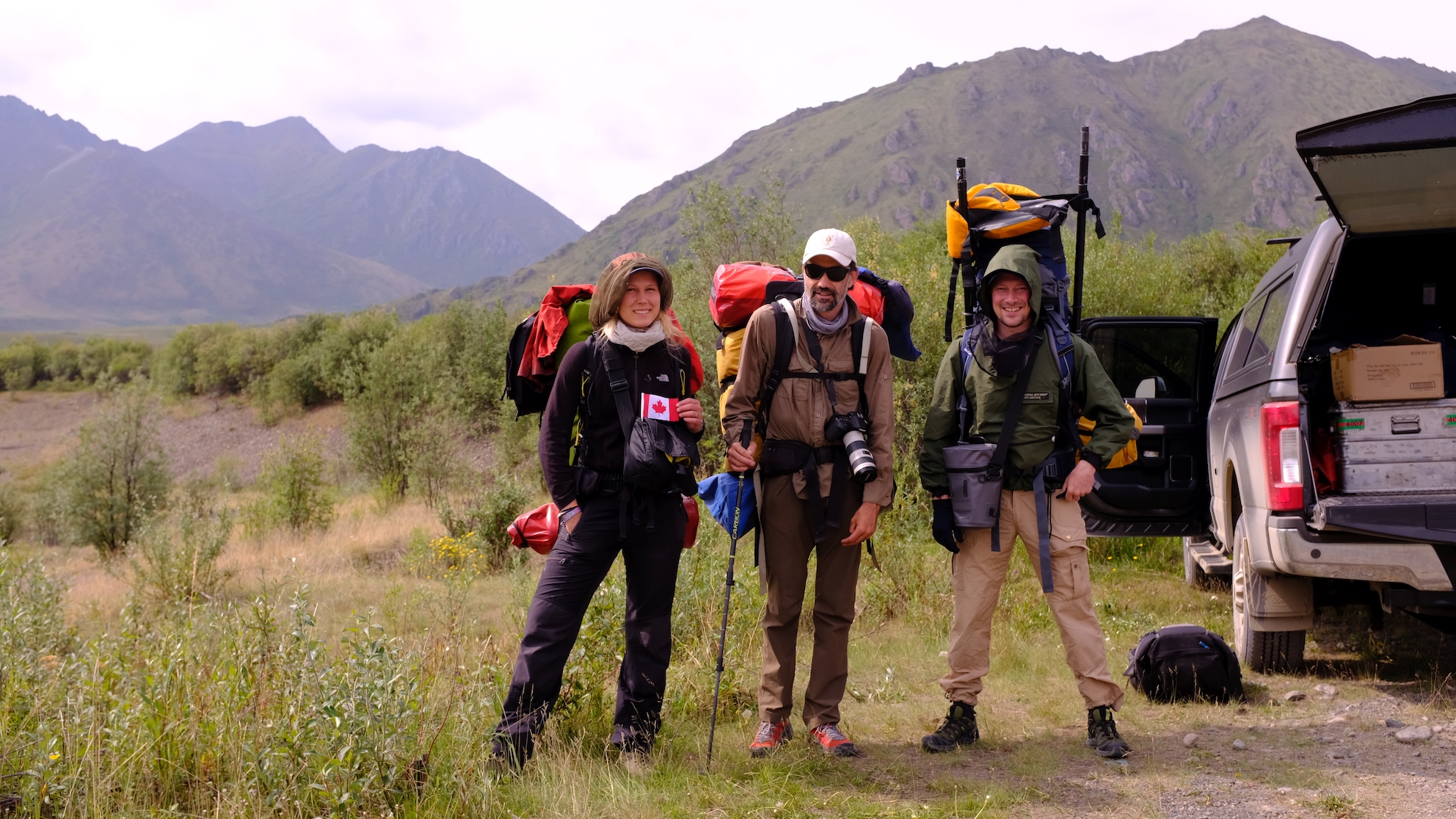Frederieke Miesner (AWI Potsdam), Paul Overduin (AWI Potsdam), Maria Peter (Norwegian University of Science and Technology, NTNU) and Torsten Sachs (GeoResearch CenterPotsdam, GFZ) flew to Whitehorse, Canada on June 30th, 2019, crossing over northern Greenland on the way.
We were met at the airport in Whitehorse by one of our partners in the European Horizon 2020 project on Arctic coastal permafrost (Nunataryuk: www.nunataryuk.org), Sebastian Westermann from the University of Oslo, who had arrived in Whitehorse earlier to procure supplies for the first of our four expedition legs.
Frederieke Miesner (AWI Potsdam), Paul Overduin (AWI Potsdam), Maria Peter (Norwegian University of Science and Technology, NTNU) and Torsten Sachs (GeoResearch CenterPotsdam, GFZ) flew to Whitehorse, Canada on June 30th, 2019, crossing over northern Greenland on the way. We were met at the airport in Whitehorse by one of our partners in the European Horizon 2020 project on Arctic coastal permafrost (Nunataryuk: www.nunataryuk.org), Sebastian Westermann from the University of Oslo, who had arrived in Whitehorse earlier to procure supplies for the first of our four expedition legs. In fact, over two years of preparation, including trial runs on the Elbe River in Germany, preceded our arrival in Whitehorse.

The five of us were greeted by hot, sunny weather, with a slight taste of burning wood in the air. Forest fires in North America’s boreal forest come earlier and are more numerous from year to year. Where fire has burned, the vegetation changes, and this, together with the warmer temperatures, is thawing the ground at an increasing rate. Many colleagues have observed consequences, which include rapid thaw of the surface and buried plant material as well as slope failure – entire river valleys have been flooded with a mix of mud and peat as the thawed ground begins to move. On this expedition, and in the Nunataryuk project, we want to find out what this means for the river water that flows from permafrost regions to the Arctic Ocean. As permafrost thaws, it releases organic carbon, plant and animal remains. This organic carbon enters the carbon cycle: it can be consumed and respired by microbes, leading to greenhouse gas production, and is transported, deposited or re-mobilized., changing river and coastal ecosystems. Our expedition will find out where the organic carbon comes from, what it is composed of and how it changes during transport.

The four legs of our expedition follow the rivers of the Peel River catchment, from the headwaters in the Tombstone Mountains to the Peel’s mouth at Fort McPherson in the Mackenzie River delta. Although this means trekking, heavily loaded, through some of the most bug-infested territory on Earth, everyone we meet in Whitehorse looks at us with dreamy eyes when we tell them where we’re headed.
We had a short night in Whitehorse, spent one morning shopping and packing supplies and headed north on the Klondike Highway, much of which was cloaked in smoke (center photo). We camped at Tombstone Territorial Park, and, after a bear safety orientation the next morning, the headwaters crew (Maria, Sebastian & Torsten) set out on foot up Auston Pass into the West Blackstone River valley. What followed were two days of hiking, heavily loaded (photos left & right), after which they inflated packrafts and floated down out of the valley, sampling all the while. In the meantime, the truck crew (Frederieke and Paul) scouted out the next sites, sampled rivers and lakes along the Dempster Highway, drove to Whitehorse and back to re-supply and collect Niek Speetjens (Vrije Universiteit Amsterdam, VU) and Wouter Berendsen (Dutch Environmental Protection Agency, DCMR) who will join the next leg. We spent a long day packing, testing our mobile chemistry lab and processing samples – one of the challenges is to keep samples of the particulate organic carbon that we filter out of the water frozen as we travel. Finally on July 7th, the first leg crew set their boats to water on the Blackstone River & set off northward through the Ogilvie Mountains and out to Eagle Plains.
Our eye in the sky, Ingmar Nietze (AWI), although also in the field in Barrow, Alaska, has sent us satellite updates on forest fires and weather, which will stay dry and hot. The fires have almost reached the Klondike Highway between here and Whitehorse and may cut us off from further participants in the trip…stay tuned!


